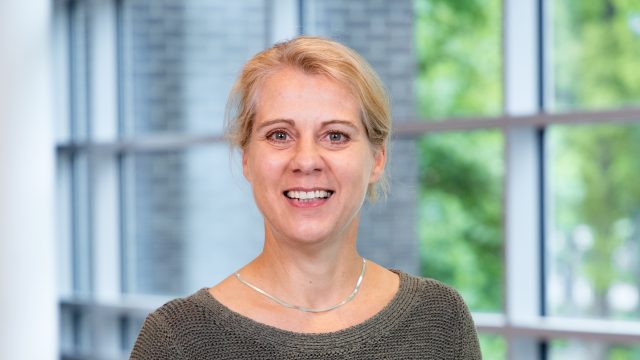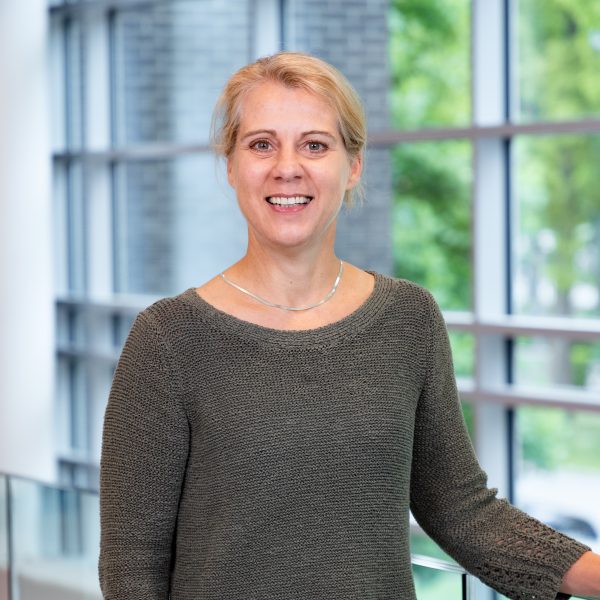Molecular mechanisms and regulation of DNA repair

Our Focus
My group focusses on deciphering the molecular details of cellular processes that maintain genome integrity. This is critical to understand cancer development and could contribute to novel strategies for cancer treatment. We use a powerful biochemical system to recapitulate DNA replication and repair under physiological conditions in vitro, enabling molecular dissection of these processes.
A major topic is the repair of DNA interstrand crosslinks (ICLs), toxic DNA lesions that form endogenously but are also induced in cancer chemotherapy. The classical pathway of ICL repair is the FA pathway affected in the cancer predisposition disorder Fanconi anaemia. However, we and others have recently identified additional ICL repair pathways. Our current research focusses on: 1) Novel factors and the molecular mechanism of the FA pathway. 2) Characterization of new pathways that repair ICLs induced by reactive aldehydes. 3) Development of high throughput sequencing techniques to examine chromatin dynamics and mutation induction. Another main research line focusses on the resolution of mutagenic secondary DNA structures (such as G4 and other structures). We developed methods to study the resolution of these structures during DNA replication but also independent of DNA replication, and define the mechanisms involved.
About Puck Knipscheer

Puck Knipscheer
My Research
Puck Knipscheer has been interested in understanding the molecular details of biological processes since her PhD (2007) at the Netherlands Cancer Institute with Prof. Titia Sixma. Here she used X-ray crystallography and biochemistry to investigate posttranslational modification by the ubiquitin-like modifier SUMO. During her postdoc in the laboratory of Johannes Walter at Harvard Medical School she started to study genome maintenance.
She contributed to the development of a unique Xenopus egg extract based system that allows the repair of highly toxic DNA interstrand crosslinks (ICLs) under physiological conditions in vitro. Subsequently, she used this system to elucidate the role of the Fanconi anemia protein FANCD2 and showed for the first time how the activated Fanconi anemia pathway acts in a specific step in ICL repair.
In 2011 she started her own laboratory at the Hubrecht Institute in Utrecht where she continued her investigations into this poorly understood DNA repair pathway. She identified the long sought endonuclease that unhooks an ICL during repair. In addition, she developed a system to study G4 structure unwinding under physiologically relevant conditions and found a direct role for the helicase FANCJ. She currently continues to use this system to investigate the mechanisms by which stable secondary DNA structures are resolved during DNA replication.
Awards
2021: ERC consolidator grant
2016: KWF project grant
2011: NWO-Vidi grant
2010: Heineken Young Scientist Award for Biochemistry and Biophysics, Royal Netherlands Academy of Arts and Sciences (KNAW)
2007: KWF (Dutch Cancer Society) preclinical- and fundamental research fellowship
Key Publications
Koichi Sato, Nerea Martin-Pintado, Harm Post, Maarten Altelaar, and Puck Knipscheer (2021). Multistep mechanism of G-quadruplex resolution during DNA replication. Science Advances, 7(39).
Hodskinson, M.R. *, Bolner, A.*, Sato, K., Kamimae-Lanning, A.N., Rooijers, K., Witte, M., Mahesh, M.,Silhan, J., Petek, M., Williams, D.M., Kind, J., Chin, J., Patel, K.J.#, and Knipscheer, P.#(2020). Alcohol-derived DNA interstrand crosslinks are repaired by two distinct mechanisms. Nature, 579(7800);603-608.
Daisy Klein Douwel, Wouter Hoogenboom, Rick Boonen and Puck Knipscheer(2017). Recruitment and positioning determine the specific role of the XPF-ERCC1 endonuclease in interstrand crosslink repair. EMBO J, 36(14):2034-46.
Klein Douwel, D.+, Boonen, R.A.C.M.+, Long, D.T., Szypowska, A.A., Räschle, M., Walter, J.C., and Knipscheer P. (2014). XPF-ERCC1 acts in unhooking DNA interstrand crosslinks in cooperation with FANCD2 and FANCP/SLX4. Mol Cell. 54(3):460-71.
Knipscheer, P., Räschle, M., Smogorzewska, A., Enoiu, M., Ho, T.V., Schärer, O.D., Elledge, S.J., and Walter, J.C. (2009). The Fanconi anemia pathway promotes replication-dependent DNA interstrand crosslink repair. Science 326:1698-1701.
Members
| Puck Knipscheer Group leader | Collin Bos Technician | Eri Berkum Scientist |
| Hanneke Elemans PhD Student | Koichi Sato Postdoc fellow | Meira Neut Technician |
| Merlijn Witte Technician | Roxanne van der Sluijs PhD student | Themis Liolios Phd student |